

Suunto Blog
Dream Traverse Video Contest Finalists: Kingdom Traverse and Patagonia Dreaming
Get to know the first two Dream Traverse Video Contest finalists and vote for your favorite to make its creator's dream come true! View all six videos and choose your winner at traversecollection
Three Suunto Traverse outdoor watches will be raffled among all voters.
KINGDOM TRAVERSE
The first candidate, Grobler Basson, comes from Cape Town, South Africa. Grobler and some of his friends actually had their adventure dream long before the contest.
“We have been planning our adventure for the better part of this year, we even called it the Kingdom Traverse long before we knew of Suunto's plans and the launch of your new Traverse watch,” Grobler says.
“We will traverse Lesotho from one side to the other. We will do this the only way we know possible – high altitude trail running, some off-the-grid mountain biking, cold water swimming and breath-taking kayaking coupled with some off-the-chart camping spots and difficult navigation!”
The Kingdom of Lesotho is a land locked mountain kingdom located inside South Africa. It is the country with the highest lowest point on Earth of 1400 m (4600 ft).
“The Kingdom Traverse would serve two goals; firstly to stimulate and temporarily satisfy our need for adventure and exploration, secondly, we see Lesotho as an amazing jewel yet to be discovered by international adventure tourism. We believe that the Kingdom Traverse would bring some amazing exposure to what Lesotho has to offer, and possible boost their tourism!”
PATAGONIA DREAMING
Candidate number two is Kellen Witschen from northern Minnesota in the United States.
“The outdoors is a place I can go to and feel free from a schedule and from responsibilities, even if it’s only a quick bike ride at the end of the day. It is a place to test your knowledge and skills, where the consequence of failure is very real and very apparent,” Kellen says.
Kellen’s Dream Traverse is far from an evening ride: he wants to ride the Carretera Austral, a 770 mile dirt road that runs from Puerto Montt to the start of the Patagonian ice cap.
“Ever since visiting Patagonia in 2012, I have dreamed about going back. While doing research there, I only got to see a small section of the area and the group traveled exclusively by motor vehicle. I want to go back and bike the entire 770 miles of the Carretera Austral.”
“The road travels through many different types of landscape and vegetation, ranging from closely woven coastal canals and Patagonian Steppe to high mountain peaks.”
Go to traversecollection, watch the six videos and vote for your favorite. Three Suunto Traverse outdoor watches will be raffled among all voters.
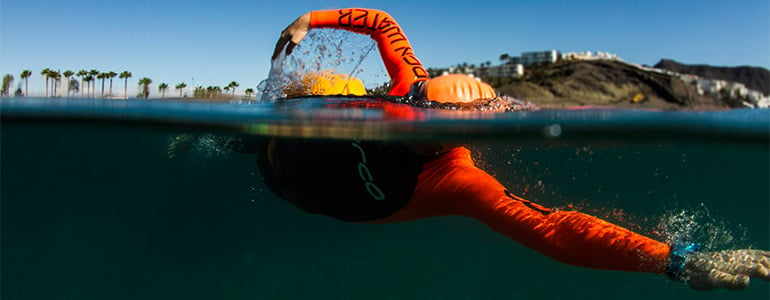
The road to Kona Ironman: Step three: Recovering for race day
The legendary Kona Ironman is just around the corner and Suunto triathlete Åsa Lundström is getting excited. We continue following her steps towards race day in our four part series. Step one was planning, step two was progress and, in this instalment, we look at her recovery or tapering time before the big day. The Kona Ironman is unforgiving. If a competitor gets to the start line not 100 per cent, the 226.27 km course can exact a heavy toll. Champion Swedish triathlete Åsa Lundström has been living in the Canary Islands for over a month, preparing for the race which will be the greatest test of her mind, body and spirit. The heat, humidity and volcanic terrain are similar to the conditions in Kona, Hawaii, making the island a better training place than her home in Scandinavia.
Click here to read about how Åsa became an elite triathlete
After an intense training cycle over the last months, for the last two of weeks Åsa has been fine-tuning her body and mind for the race. During the first week of her two week tapering period, she reduced her training volume from 35 to 20 hours. In the week immediately before the race, she cuts it from 20 to between eight and 10 hours. “This stage involves easing off the volume of training and sleeping and eating properly, and making sure to rest between the sessions to ensure quality training that feels really good,” Åsa says. “This is usually the first time when I can start sensing whether I am in good shape.” The big danger is getting to the start line over-trained. Avoiding this is crucial.
Click here to read about how to use your Ambit3's recovery features
“It’s important to pay close attention to the body’s signals,” Åsa says. “It comes down to having the experience of knowing the different signs of fatigue from hard training, and accumulated fatigue leading to overtraining. “Sleeping enough, eating enough – and frequently enough – are important for recovery.”
Åsa also writes a detailed training diary for her coach Cliff English to read for an objective perspective. Cliff looks out for negative signs and patterns that can sometimes be difficult for her to see herself. “Three weeks of hard work, good fun and nice company in this lovely place has come to an end,” Åsa says. “The journey continues and the countdown has begun! Bring it!”
Tune in next week for the final instalment of four part series about Åsa – her ideal race day in the Ironman World Championship in Kona.
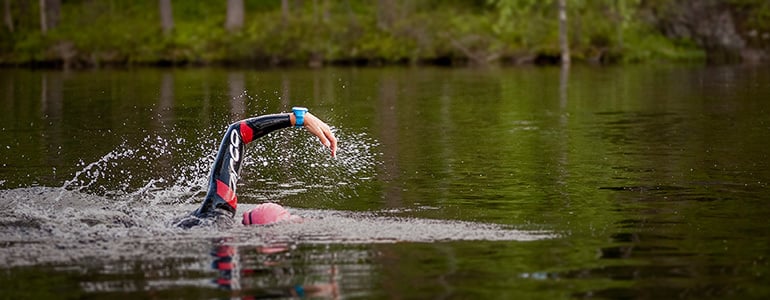
The road to Kona Ironman, Step two: rapid progress
Last week we kicked off the first instalment of our four-part series following Suunto athlete Åsa Lundström as she prepares for the coming Ironman World Championship in Kona, Hawaii. After looking at step one last week, planning, this week Åsa tells us what progress, step two, looks like as her training intensifies.
There’s one crucial sign Åsa looks for to know she’s making progress in her training for the Kona Ironman: feeling unbeatable.“They don’t come very often, but every now and then, you should get that moment, if only for a moment, that you are unbeatable,” she says. “If I don’t ever get those ‘I’m on fire today!’ moments in my training periods, then something needs changing.“I don’t do tests or anything like that to check I’m in good shape, I just look for signs, a feeling, during the quality sessions I do – it’s the feeling of being immortal, unbeatable, strong.”
Click here to read more about Åsa Lundström, the unlikely Swedish triathlete
© Orca/Gines Diaz
Having planned her training with her coach Cliff English, it’s then time to make rapid progress, to push herself towards her personal best while also ensuring she has enough recovery time.Åsa’s training progresses through three stages: the first is getting into the rhythm of hard training; the second stage involves blocks of quality and quantity sessions; and the last is a tapering period of two weeks before race day. As Åsa moves through the three stages, her coach Cliff English tracks her performance and makes adjustments to her training as required. Understanding and trust between athlete and coach is essential here.
The longer Cliff works with an athlete, the more data he accumulates, which better helps him track the athlete’s performance and recognize when changes must be made. This means both he and Åsa must be sensitive to signs they’re pushing too hard or not hard enough.
Click here to read Åsa’s 8 open water swimming tips!
“If I start having trouble sleeping, or lose my appetite that could be a sign to back off a bit,” Åsa says. “On the other hand, if I never feel exhausted after a quality session, but have an unsatisfying feeling, that could be a sign of not pushing hard enough. “I am supposed to feel tired between the sessions more or less all the time.”As her training intensifies, Åsa also works on the mental side of her training by spending time visualizing the race, the potential scenarios that could happen and how she would respond to them. “As race day gets closer, I also stop meeting people who might be sick, or even just have a minor cold,” she says. “I skip junk food and unnecessary treats and I make sure I get enough sleep every night.”
Stay tuned for third installment of our four part series about Åsa as she makes progress on the road to the Ironman World Championship in Kona.
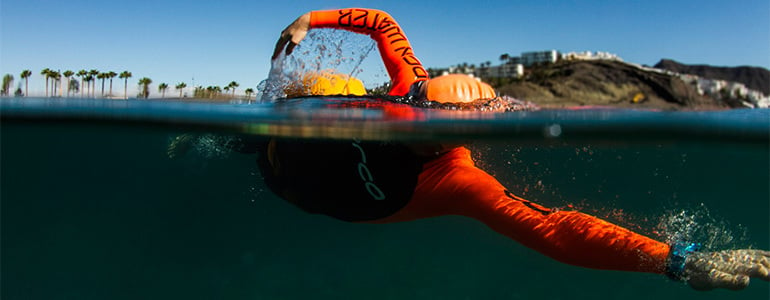
The road to Kona Ironman, Step One: Planning for Success
What does it take to train for the Ironman World Championship in Kona, Hawaii? Follow our four-part series about Suunto athlete Åsa Lundström as she prepares and find out!
For Swedish triathlete Åsa Lundström the next few weeks are everything.
Over the last month, the 30-year-old medical student and professional athlete has been preparing for the approaching Ironman World Championship in Kona, Hawaii on October 10th, 2015.
It’s the legendary Ironman that every triathlete dreams of competing in. That dream is about to become a reality for Åsa.
“Every sport has tales to tell of battles on the race course,” she says. “And with Ironman, we all hear stories of the legendary clashes of the triathlon titans at Kona.
“The best part is that we now have the opportunity to become one of those stories.”
Click here to read more about Åsa, the unlikely Swedish triathlete
Like all big projects, Åsa's road to Kona begins with the most important step: careful planning. She works closely with her professional triathlete coach, Cliff English, for this. When to intensify, where to train and when to go to Hawaii have all been planned well in advance.
Cliff updates Åsa’s training schedule week-by-week, always trying to find the right balance between the intensity and volume of her training and ensuring she gets enough recovery time.
“I’m constantly monitoring her sessions, looking at objective measurements, such as pace and power, as well as her subjective feedback on each session and on other factors including sleep quality, muscle soreness and freshness,” Cliff says.
During a normal training week, Åsa puts in between 20 and 25 hours. For Kona, that jumps to 35 hours every week. Her life becomes structured around training. In one week, she swims five or six times, cycles four or five times, runs five to six times and does strength and core training three times.
“Åsa typically trains two to three times per day,” Cliff says. “Some of the sessions are separate with a morning session then a midday session and typically a lighter active recovery session later in the day.
“I tend to prescribe one key session per day, however I also include combo sessions that include bike and run that are typically executed at race efforts.”
All this training might sound austere, like Åsa has no life, but she enjoys the process.
“When I have a big goal to work towards, it feels natural to focus on that, and to make choices adjusted to it,” Åsa says. “I don’t believe being disciplined means life cannot be fun at the same time.”
To keep things fun and to plan in a short term training goal, Åsa recently competed in the Tjörn Triathlon in Sweden and won the women’s division.
“It was a great boost,” she says, “and gave me proof that my training is going in the right direction.”
That’s important because she says it’s not always easy to tell if her build up is going well.
“When you are in a big training period, you feel tired and worn, and it’s hard to tell sometimes,” she explains. “However, when you feel tired, and you somehow manage to make the body do what you ask, then this is a good sign, especially if you were able to push yourself to a required pace or effort you didn’t think you could do.”
Åsa recently travelled to Fuerteventura in the Canary Islands to begin her final preparations. The warmer conditions are more similar to Hawaii than in Sweden, making it a good training ground.
Check out the second step, progress, of our four part series about Åsa as she continues on the road to the Ironman World Championship in Kona.
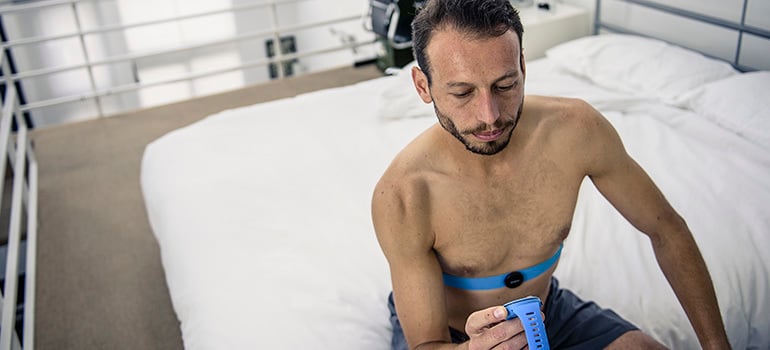
Here's what recovery really means
We all know proper recovery is an essential part of any training regime, but what exactly happens in our bodies while we rest, how does it impact our performance and how can new recovery features released to Ambit3 watches support our recovery? To get the answers on the science of recovery, we talked with Tero Myllymäki, who leads the physiological analytics development at Firstbeat Technologies.
Tero, can you talk us through how recovery impacts our performance?
The role of recovery is not only crucial to an athlete’s development, but to overall health and wellness; without sufficient recovery, it is impossible to build one’s endurance and stamina. In sports, the whole exercise philosophy is based on the fact that while exercising, body balance, so called homeostasis, is placed in a state of imbalance which lowers our body’s performance level. By taking the time to rest (referred to as “recovery”), this performance level is gained back, and, thanks to this recovery process, it is possible to gain a higher performance level.
What about the role of a good night’s sleep?
A really important fact in recovery is the need for a good night’s sleep. Sleeping well at night is really crucial to recovery, since it is a repetitive, long period of time, during which all body functions can relax. If recovery is successful, all the stress caused by strenuous exercising, along with other factors in your daily life, is reset at night (while you rest), and the body’s resources are replenished. Body stress and recovery can be compared to batteries: you can only use them or charge them once in a while.
Suunto Ambit3 watch offers two tests for measuring my recovery level, but what are the tests measuring in practise?
Recovery is analyzed by measuring the body’s autonomic regulation balance through heart rate variance. At night, one would expect the parasympathetic (so-called relaxing body function) to be powerful and thorough enough to activate the body’s recovery processes. Recovery measurement tests determine how calm a person’s body is during sleep.
How does this information benefit an athlete?
Monitoring this recovery can make the time used in exercising more efficient, because it is good to know when you can exercise on full speed, and when you should take it more slowly and simply let your body recover. Recovery measurement tests will also tell you when you are training too hard, or when you should work harder, so that an athlete can measure the risk of exercising too hard, or not exercising at all. Recovery monitoring is a learning process for you; it enables an athlete to reflect on how he/she is feeling.
What about muscle pain or flue, will the recovery test recognize these?
Even though the autonomic regulation has regained normal levels, intense or abnormal exercises done by an athlete might cause muscle damage, as well as risk to the overall body energy levels. These situations cannot be monitored via autonomic regulation tests. Weakened muscle level recovery can be seen during the exercise, although you wouldn’t be able to see it in the recovery tests. Instead, the effect of diseases such as fever which affect the overall body regulation system, can be seen in the autonomic regulation activity, and, consequently, from the recovery test data.
Can I analyze my sleep quality with the test?
Sleeping badly, and/or waking up during the night can be regarded as a side-effect of the body refusing to slow down, and the heart’s autonomic regulation and/or parasympathetic regulations are weak. This also lowers the recovery levels. The quality of your sleep is influenced by many different factors, and sometimes it may indicate how a person feels about his/her sleep; other times, it may be a direct result of the electrical impulses in the brain which measure sleep phases. Recovery measurements won’t directly measure these sleep phases, but it can reflect on it by measuring autonomic regulation (how relaxed the body is).
Read more about the features: Tutorial Tuesday: Learn how to use Ambit3's recovery features
Tero Myllymäki, M.Sc., Physiology Research, Firstbeat TechnologiesMr. Myllymäki is responsible for physiological analytics development and research collaboration at Firstbeat. He possesses an academic background, and previously worked as a researcher in several multidisciplinary expert teams, combining physiology, psychology, and technology. His goal is to seek innovative solutions for providing meaningful and actionable feedback on well-being, lifestyle, and performance in daily life. Mr. Myllymäki has a Master’s Degree in exercise physiology from the University of Jyväskylä.
Get to know your recovery status with Ambit3 watchSuunto Ambit3 watch offers two ways to follow your recovery. The quick recovery test and the sleep recovery test both measure your heart rate variability to give you an indication of your recovery status in percent. The higher the percentage, the more recovered you are. The tests require a Bluetooth Smart compatible heart rate sensor that measures heart rate variability (R-R interval), such as Suunto Smart Sensor.
The quick recovery test is performed by wearing the Smart Sensor belt for three minutes and then checking the recovery percentage from the Suunto Ambit3 watch. Alternatively, you can run the sleep recovery test which measures your heart rate variability through the night to give you an accurate indication of your recovery status in the morning when you wake up.
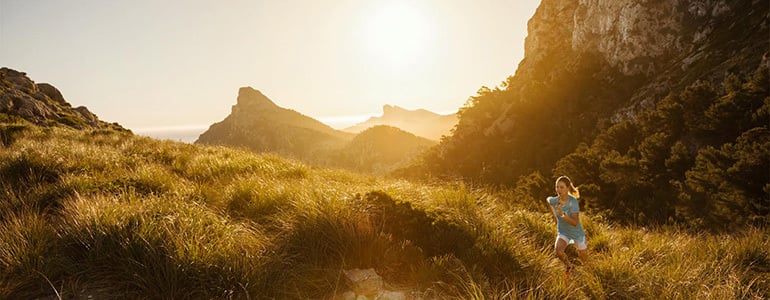
Recover like a pro
What is the best way to recover after a race, adventure or just a hard effort on your own? We asked our ambassadors how they do it. From eating pancakes to paragliding, from secret smoothie recipes to stretching, their answers will help you get back on form more quickly.
KILIAN JORNET Stay fresh by doing other sports I like to do some mountaineering activities to feel different feelings than just running. I ran less than 200 km in the build up to Hardrock because I was climbing instead. I was keeping myself fit through mountaineering so when I came to the race I was mentally fresh and physically prepared.
Kilian stretches ©jordo canamerasAvoid over-trainingIf you focus too hard on one thing for too long you can get tired of it. You see people who are doing a lot of long races and who keep this up for one or two years and then, boom, they’re down and injured. It’s important to never do too many long races every year because after one, two or three years it can be really hard to recover. For me, 200 or 300 miles a year is the limit.
Kilian Jornet is a multiple record breaking trail runner, endurance athlete and world champion ski mountaineer.
EMELIE FORSBERG Rest! Normally I rest the day after or if it is an ultra at least. If I do a 2-4 hour race I normally go for a small run just to get the circulation going. I also like to treat myself after a race, like foot bath, compex [electrostimulation] take time for yoga, things that are easy and good for the body. Then my mind feels recovered and is soon ready for another hard training week or racing. I think the mind is very important for recovering.
Emelie likes to practise yoga and eat pancakes. ©Emelie Forsberg
Eat pancakesAfter an ultra, where you empty your body quite a lot and also eat chocolate or gels, I like to eat fresh and healthy, at least the first and second day. But pancakes is a standard the morning after, and yes I think pancakes can be pretty healthy..! Specially if I make banana pancakes :)
Emelie Forsberg is a European and world Skyrunning champion
CONRAD STOLTZ
Forget ice baths I don’t go in for compression or ice baths. I used to jump in a cold rivers after training but I'm over it! Compression socks don’t fit well and science hasn’t really proven that ice baths work.
Old school fan: Conrad Stoltz doesn't go in for ice baths or compression. ©zooom.at/markus berger
Refuel properlyBut there are things that are proven to make a difference, fueling and rehydrating properly. Within the first half an hour of training you need to have so many grams of carbs and so much protein to start the recovery. [Advice varies but many sports nutritionists recommend following the for 3:1 carbs to protein ratio.]
Conrad Stoltz is a four-time XTERRA World Champion triathlete
ÅSA LUNDSTRÖM
Easy rideGo on a very easy bike ride. It helps the circulation going and speeds up the recovery. If the weather is bad or biking is too much trouble (mentally), I sometimes go for an easy walk or stroll.
© Åsa LundströmMassage In big blocks of training, a massage every now and then is very good for recovery, muscle relaxation and preventing injury. It can also be considered a treat for your body after some hard work and helping you relax. I get the massage after a big day of training, as the thing of the day.
UELI STECK
ElectrostimulationI use compex electrostimulstion and try to stretch a lot. Rest days are also good. I just had a rest day so I ran easy the vertical km up to Brevant in Chamonix. I had a drink with a friend then went paragliding.
Ueli Steck during his mission to climb all 82, 4000 m mountains. ©PatitucciPhotoWarm down after exercise I move between 7 and 14 h per day. You start easy the first 30 min and you end the same way. So you have your warm-up and cool down. If possible I try to get my feet in a cold stream.
MATTHIAS SCHERER
Respect your body I really have to say that in the adventure world at the moment recovery and nutrition is not taken seriously. People are strange about hydration. They wear a Suunto Ambit, have the best equipment and then they drink snow water and don’t take things like this seriously! Take electrolyte capsules with minerals to rehydrate properly.
Matthias front lifting weights. ©Tanja SchmittAvoid processed foodsTry to go as long as you can on normal food and then you can start to eat energy bars etc. People push the limits of eating concentrated food which can cause stomach problems. Eat a peanut butter sandwich.
Bring it down slowlyFor recovery it’s important not to stop right away after an ice climbing season. I used to become ill in April when I stopped. Now I continue with skiing and in June and July I keep going to the mountains. I've found cycling helps me to mentally digest everything I've done over the winter. In a week I try to do at least 20 hours on the bike. I work on my films. That's my way of recovery.
Matthias Scherer is a professional ice climber
GREG HILL
Smooth operatorAs a ritual I always have a smoothie after my sporting activities. As quick as I can I am at my blender mixing in my ingredients. Bananas, blueberries, protein mix, raw cacao, milk. That is the base for the majority of my shakes, each food is strong in its own way, combining for a strength building, body recovery, tasty beverage.
Greg making a smoothie at home ©zooom.at/Markus Berger Cross TrainingAnother bit about an ageing body is balance. If over the course of your life you have created imbalances, they become more problematic in later years. To counter act I have been going to the gym to create an overall body fitness not just one designed for peddling a bike or skinning up mountains. Back problems, IT-band issues, all come from unbalance, so cross training is key.
Take some time outAlso to truly have days off. Not partial days off. But couch surfing, suntanning, doing nothing days. You can get away with just one but at least every two weeks to take 2-3 days completely off. This truly helps my body as well as my mind. I come back and feel so much better than if I had pushed through on that extra day of exercise.
Greg Hill is a pro skier. In March 2014 he skied 100,000m in a month
WILLIAM TRUBRIDGE Sleep and eat right “Recovery is as equally important as training. In freediving when you hold your breath it generates a huge amount of carbon dioxide which makes your body very acidic and means all those free radicals cruising around doing damage. Being able to target that with diet that's very rich in antioxidants and making sure you're sleeping right is important.” Drink this:
Will Trubridge's recovery smoothie
My go-to recovery drink after deep training is a green smoothie, with the following ingredients: 1 frozen banana (makes the smoothie cold and creamy) 1 cup almond milk + water added to get the right consistency 2 tbsp Manitoba hemp protein (the best vegetal protein source) 1 tbsp cacao powder (great antioxidant qualities) 1 tbsp Hawaiian spirulina (nature's multivitamin, with many other superfood ingredients like chlorophyll, omega 3,6,9 fatty acids and more) 1 tsp beetroot extract powder (great for blood-building)Everything is blended together, and topped with a dusting of granulated bee pollen.
Will Trubridge is a multiple record breaking freediver
Still need tips on how to recover? Well go explore the recovery options available with the Ambit3










































































